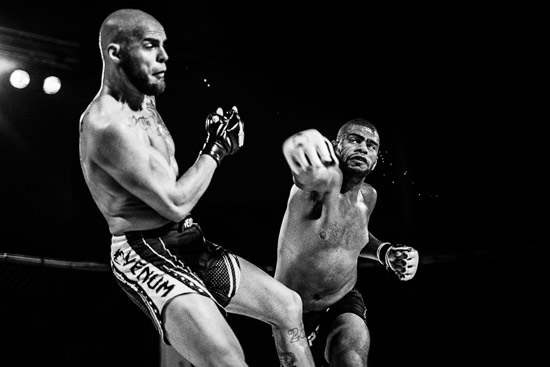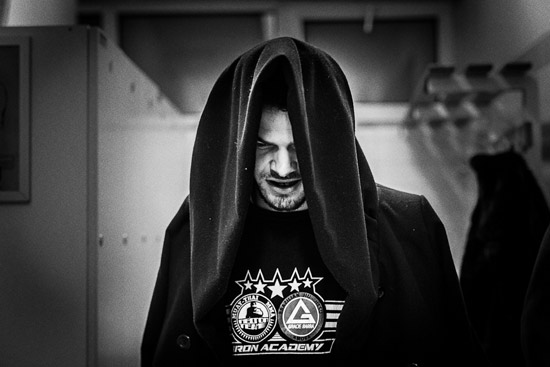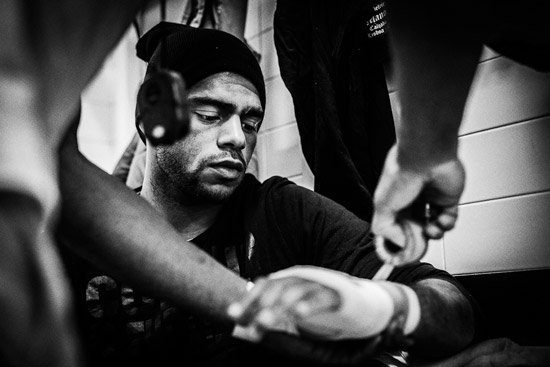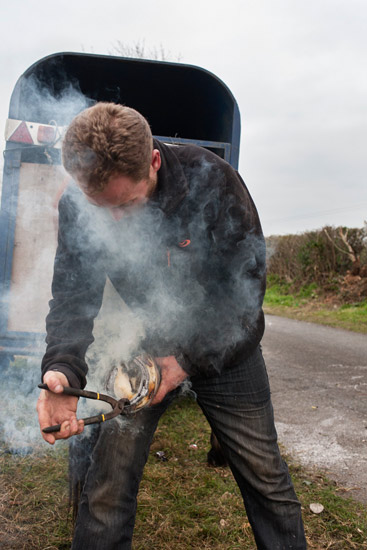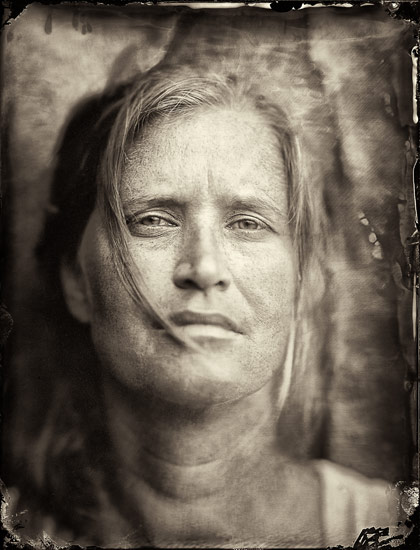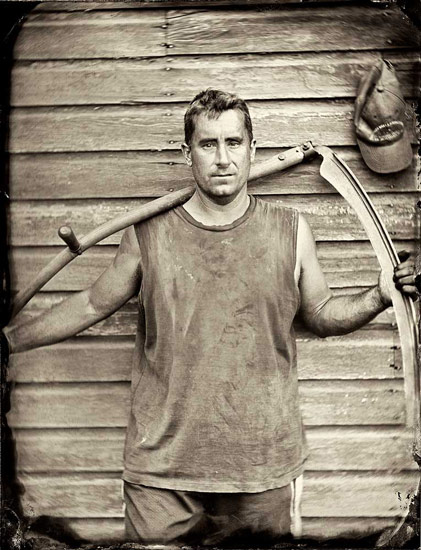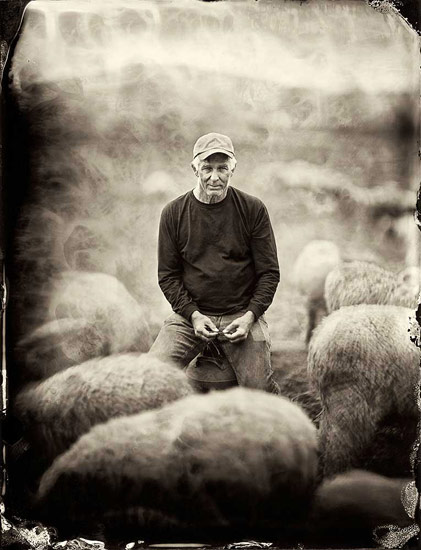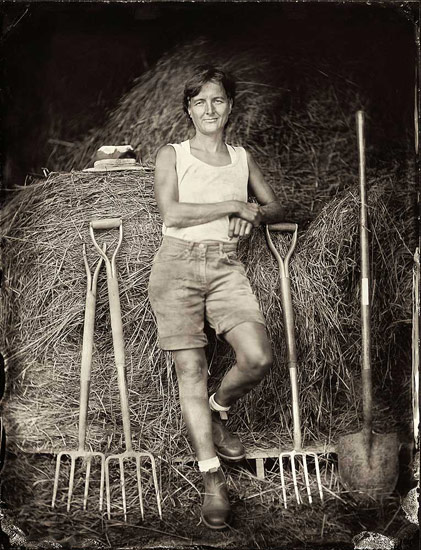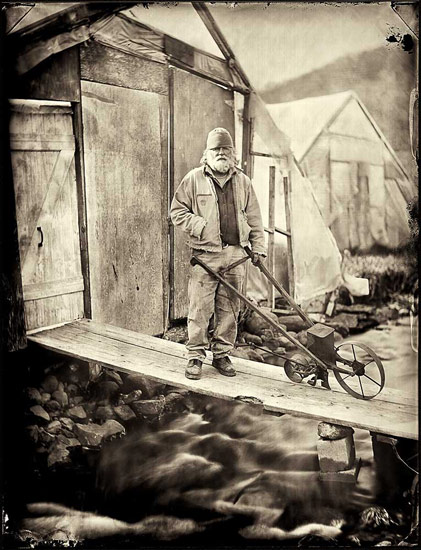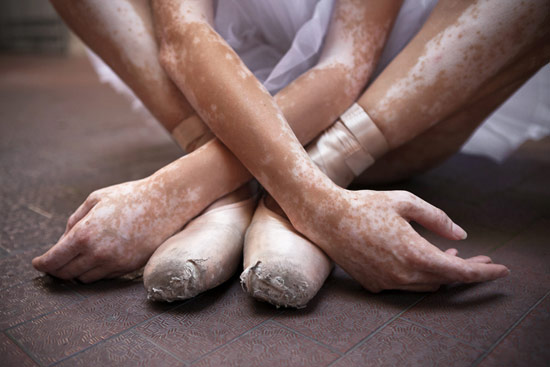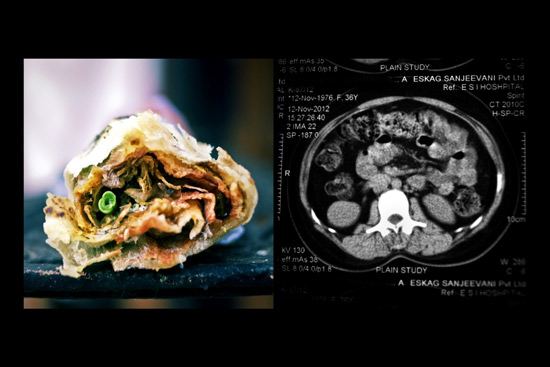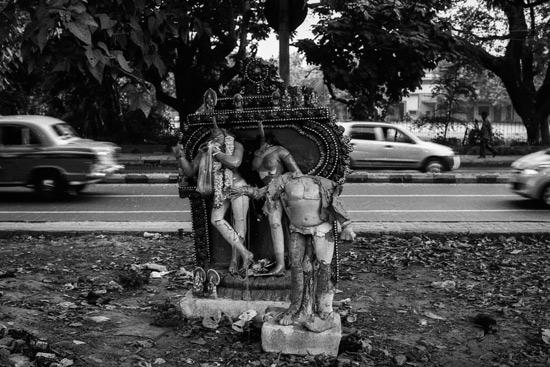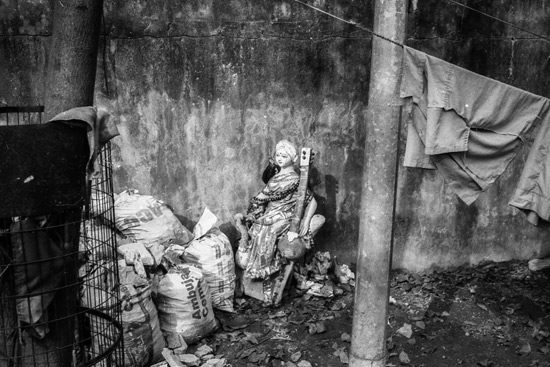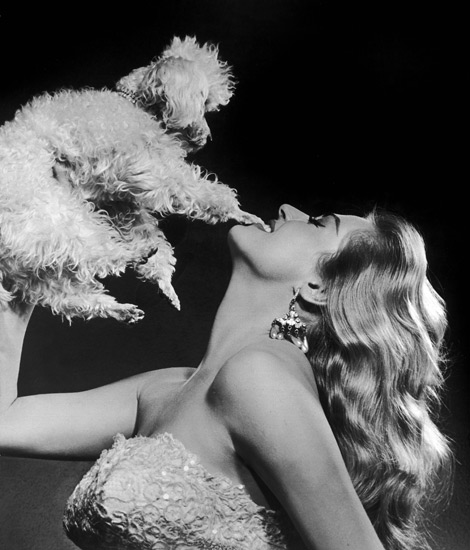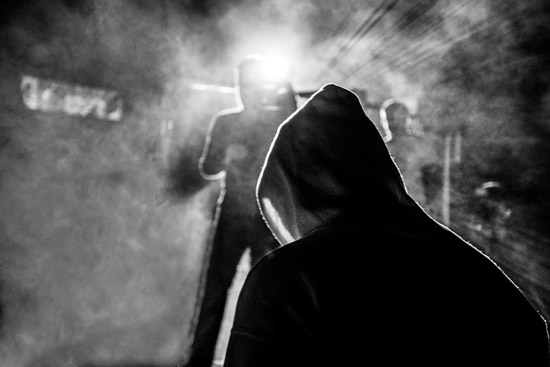
Great series! Portuguese mixed martial arts fighters by our prolific friend
Francisco Salgueiro. One can almost hear Francisco's photos.
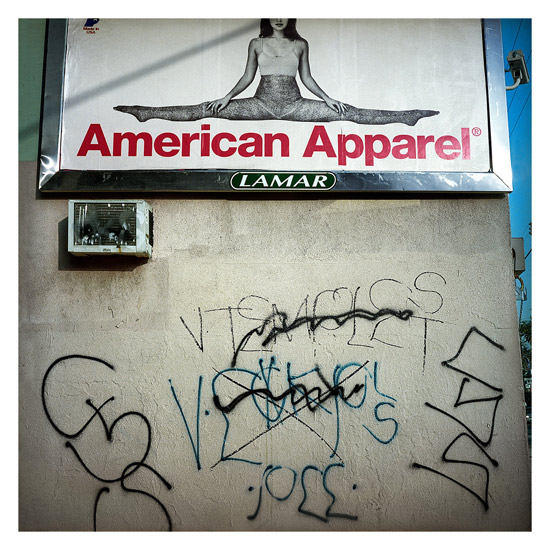
Los Angeles-based
Thomas Alleman's commentary on the ubiquitous and perturbing images that constitute American Apparel's ad campaigns.
"American Apparel is an internationally-known purveyor of hip sportswear. Their advertising campaigns are controversial for their depiction of very young women who're sexualized in strangely-poised photographs. In Los Angeles, where American Apparel manufactures its line, the company has for many years licensed about a hundred small billboards in ethnic and working-class neighborhoods, where those ads are placed at eye level."
"The sexual fantasies portrayed in those sleek, graphically simple ads are surrounded by the very complicated reality of LA's visually chaotic urban landscape, whose grit, anarchy and blight are at odds with the blithe spirit of those strange billboards. My photographs document the "dialogue" between LA's built environment and American Apparel's groovy, pervy teenage daydreams." - Thomas Alleman.
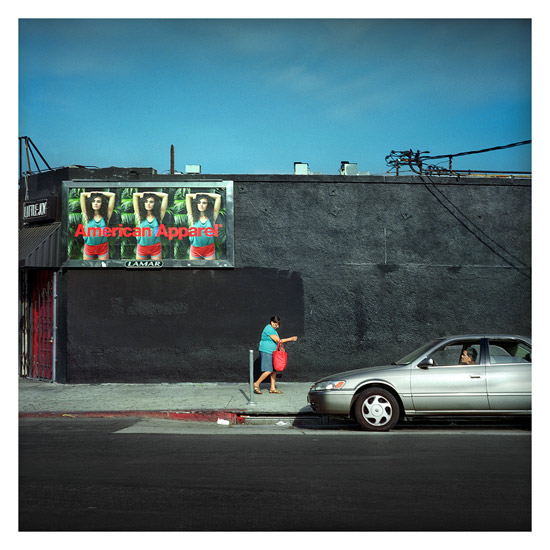

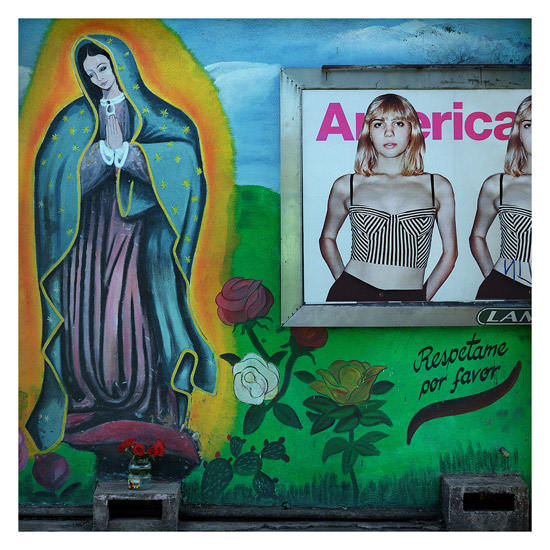

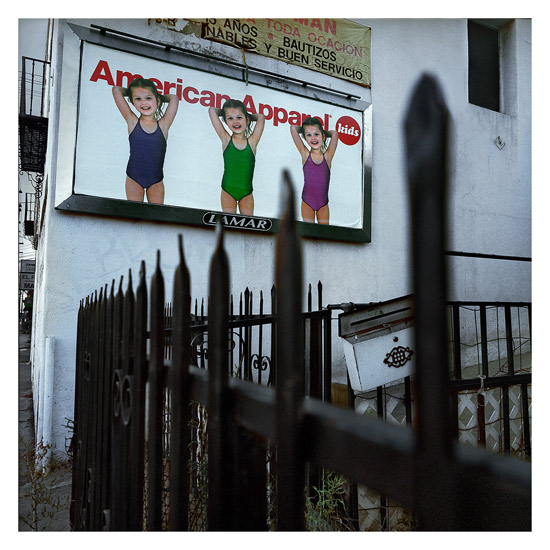
"Two ads, on the advertiser's website and Instagram page, for a skirt which was featured in their 'School Days' or 'Back To School' range:
a. The website ad on www.americanapparel.co.uk featured an image of a girl wearing the skirt, a top and white underwear, bending over to touch the ground, photographed from behind from a low angle. Her crotch and buttocks were visible.
b. The ad posted on the advertisers' UK Instagram page featured an image of a girl wearing the skirt and a top leaning into a car, photographed from behind from a low angle. Her buttocks were visible.
Response:
American Apparel (UK) Ltd said the images which appeared in their advertising featured non-airbrushed, everyday people, most of whom were not professional models. They said their approach was not graphic, explicit or pornographic, but was designed to show a range of different images of people who were natural, not posed and real. They said their models were happy, relaxed and confident in expression and pose and were not portrayed in a manner which was vulnerable, negative or exploitative."
#stayklassy
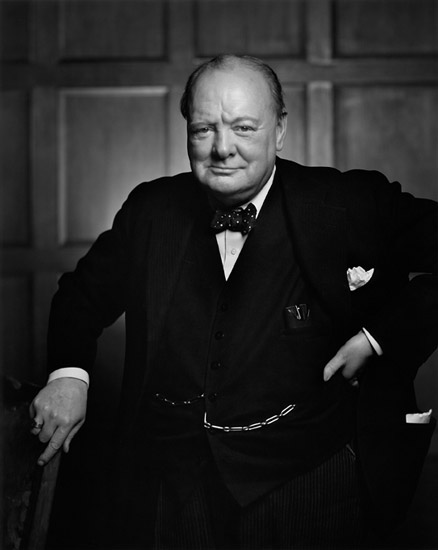
There are a lot of events going on around Sir Winston Churchill this year, and we are involved in a few, not least of all the Order of Service for the wreath laying in his honour at the Houses of Parliament on January 30th, which is the 50th anniversary of his State Funeral. Here at the Karsh Estate we are proud to work closely with the Churchill Center and archives, and I thought I'd take this opportunity to publish the Smiling portrait, rather than the Roaring Lion with which we are all so familiar, as this image is being used by the Center and its partners.
For those of you who don't know the story of the Churchill photo shoot, here it is:
"My portrait of Winston Churchill changed my life. I knew after I had taken it that it was an important picture, but I could hardly have dreamed that it would become one of the most widely reproduced images in the history of photography. In 1941, Churchill visited first Washington and then Ottawa. The Prime Minister, Mackenzie King, invited me to be present. After the electrifying speech, I waited in the Speaker's Chamber where, the evening before, I had set up my lights and camera.
The Prime Minister, arm-in-arm with Churchill and followed by his entourage, started to lead him into the room. I switched on my floodlights; a surprised Churchill growled, "What's this, what's this?" No one had the courage to explain. I timorously stepped forward and said, "Sir, I hope I will be fortunate enough to make a portrait worthy of this historic occasion." He glanced at me and demanded, "Why was I not told?" When his entourage began to laugh, this hardly helped matters for me. Churchill lit a fresh cigar, puffed at it with a mischievous air, and then magnanimously relented. "You may take one." Churchill's cigar was ever present. I held out an ashtray, but he would not dispose of it. I went back to my camera and made sure that everything was all right technically. I waited; he continued to chomp vigorously at his cigar. I waited. Then I stepped toward him and, without premeditation, but ever so respectfully, I said, "Forgive me, sir," and plucked the cigar out of his mouth. By the time I got back to my camera, he looked so belligerent he could have devoured me. It was at that instant that I took the photograph." - Yousuf Karsh, 1908 - 2002.

A quick intro, courtesy of
Wikipedia:
"Irish Travellers, also called pavees, tinkers or gypsies, are a traditionally itinerant ethnic group who maintain a set of traditions. They live mostly in Ireland as well as having large numbers in the United Kingdom and in the United States. Their origin is disputed."
"My project 'The Travellers' gives insight into the everyday life of Ireland's largest minority group. This group has a nomadic origin, stemming from the tradition of migrant workers. As this tradition no longer exists, the travellers are looking for a new identity within the Western European society of the 21st century. Both the travellers' traditions and their way of life are so different that they are met with little acceptance by the rest of the Irish society. The travellers live in a kind of parallel world with rules all of its own and traditional gender roles, a world to which outsiders have little access."
"To this day, some traveller families live by the roadside illegally - mostly without electricity, running water or sanitation, even though the government has provided halting sites for the travellers where they can stay with their caravans.
I travelled to Ireland with a VW bus in order to photograph the travellers the first time in 2011. I wanted to capture the travellers' way of life and their values in pictures. In doing so, I did not want to romanticize them, but rather show their everyday life. A life where people still hunt rabbits and where horses play a vital role. But it is also a life that contains hardship and boredom from an early age.
Since my first encounter with the travellers, I have been in touch with one large family. Over time, I have gained their trust. Consequently, I was allowed to live with them so that I and my camera became part of their daily lives."



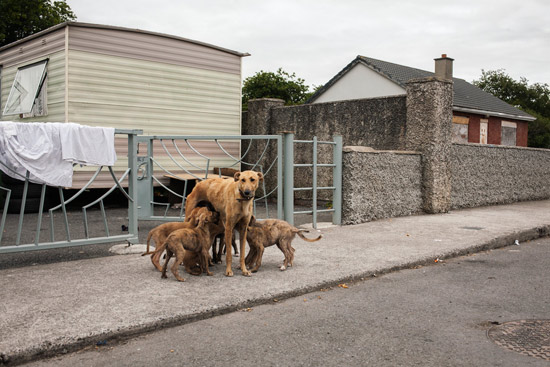

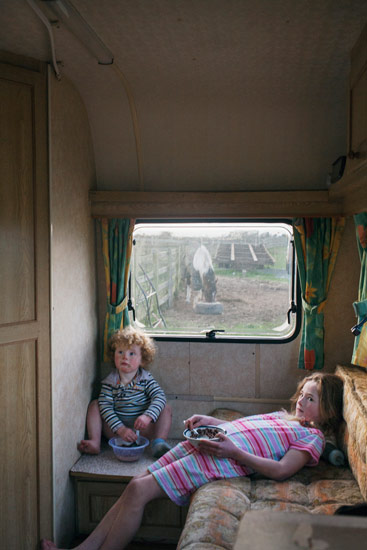
Among other acclaim, Birte received a CNN Journalist Award in 2014, was Category Photo Winner PDN Annual 2013, and a Critical Mass 2013 Top 50.
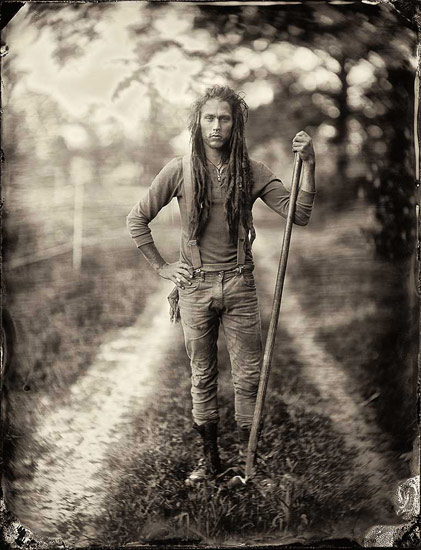
Jay Uhler © Francesco Mastalia
From "Organic: Farmers & Chefs of the Hudson Valley" by Francesco Mastalia, published by powerHouse Books.
For this two-year portrait project,
Francesco Mastalia photographed over 100 farmers and chefs located around New York State's Hudson Valley, a region known for its organic and farm-to-table principles. Mastalia decided to use the wet-plate collodion process, producing these appropriately earthy images. The amber toned photos are collected into Mastalia's
new book, which is out now from
powerHouse.
""Organic" is one of the most misunderstood and often misused words describing food today. In narrating their own stories, the farmers and chefs share their philosophy about what it means to grow and live organically and sustainably. "Organic" is not just about growing and producing food, it is about the life of the planet. It is about preserving an agricultural tradition that will safeguard farmland for future generations."
Jody Bolluyt
Jeff Bialas
Eugene Wyatt
Hanna Bail
Guy Jones

Gorgeous images from
Leonardo Fabris who lyrically states "The Vitiligo disease patches move to the rhythm of its development as the dancer's body moves to the rhythm of music. Through his pictures the photographer is able to create an elegant comparison between the subject and the disease."
Indeed he gives great dignity to dancer and disorder. Delightful.
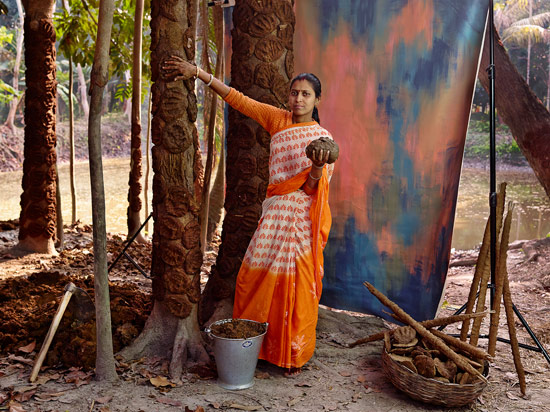
A perfect project statement from Indian-born, New York-dwelling, SVA grad
Supranav Dash, about his pensive series 'Marginal Trades':
"Trades and professional practices have always been intertwined with the caste system in India. Each caste and its sub-sets would stereotype an individual and dictate their occupational practice. Since the early 1800s, people were not allowed to deviate from their fixed professions or they would be outlawed by society, which at the time, social morals reflected ignorance and strong attachment to orthodox beliefs."
"The tradition of professions and trades being passed down the line from father to son, continued for generations until recently when globalization and rapid socioeconomic change resulted in the problem of enculturation and automation. At that point, many of the age-old practices faded out, while others are currently on their way to extinction. The modern Indian generation refuses to stick to their ancestral professions and trades; they have become more daring and switch to the more lucrative business possibilities.
The abandonment of the traditional practices also result from insufficient incomes, a desire to escape the caste stereotypes, the constant neglect of the privileged classes of the society these people serve, and a government that is not open to social reforms.
Global trends are constantly changing; therefore, in these frantic times, it's very easy to forget our past, culture and traditions. I am not opposed to modernization, but at the same time, I want to slow things down, force one's self to recognize and remember the beauty of these analog practices.
As a photographer, I want to use my craft to pay respect to these tradesmen and bring them to light.
When photographing the Tradesmen, I note down how much they earn in a week and tally it with the number of family members they support; which brings up a political dialog about exploitation, deprivation, neglect and lack of social reforms. India chooses to overlook the plight of these helpless masses who earn below the minimum wage mark and are rapidly falling below the poverty line.
The images are informed by the works of Eugene Atget (Les Petit Metiers), Irving Penn (Small Trades), August Sanders (People of the Twentieth Century), and by the Indian ethnographic images of Sir John F. Watson and John W. Kaye (The People of India, 1868-75)." - Supranav Dash.
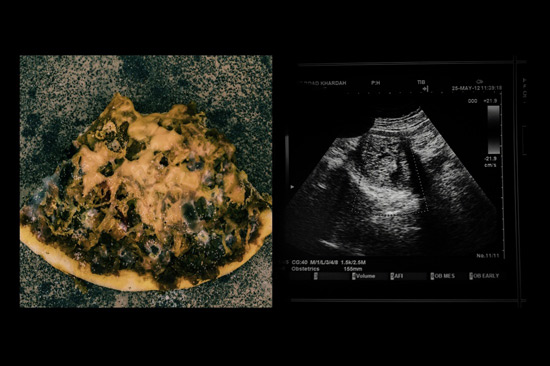
I got fixated on
Shan when publishing his deserted idols series. Here's 'Blow'. I think these are simply brilliant!
"'Blow' takes a metaphorical, almost surreal, look at modern-day consumerism and how it affects our inner state."
All images © Shantanu Bhattacharya
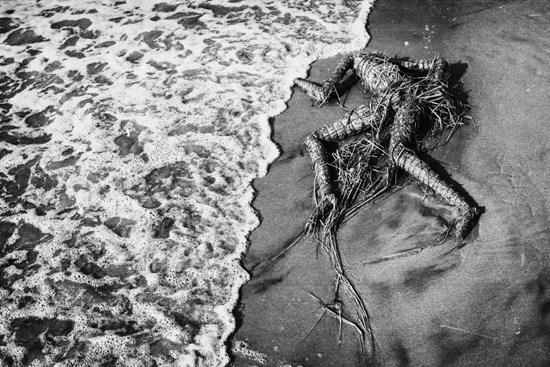 © Shantanu Bhattacharya
© Shantanu Bhattacharya
I'll let Shan explain these as he does it so well:
"The relationship between Hinduism and idolatry is a complex one. In Yajurveda it has been said that God Supreme or Supreme Spirit has no 'Pratima' or material shape. He cannot be seen directly by anyone. His name is so great that only the Name is enough to invoke him. He pervades all beings and all directions. Thus according to the Vedas God neither has any image nor he resides in any particular idol or statue.
Yet we find that Hindu temples are filled with images or idols of gods and goddesses. And a fair percentage are worshiped at specific days of the year through idols made up of straw and clay. On that particular day, they are dressed in costly fabric, treated with paint, subjected to readings of holy mantras and receive offerings from devotees. Curiously, however, once the day gets over, these idols lose their divinity and are disposed of."
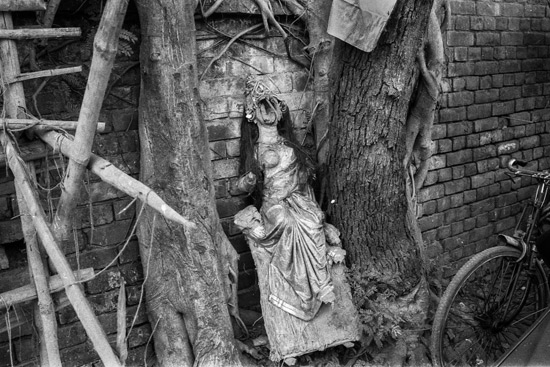
"The most common explanation goes like this - as the mind cannot concentrate itself on a formless being one has to assume God in some visible object or image. Devotees believe that God made Man in his own image. So it seems only natural that man has also constructed his God by his own image. Perhaps it also becomes easy to stop treating an idol divine after the ritual if that idol is of a humanoid shape."
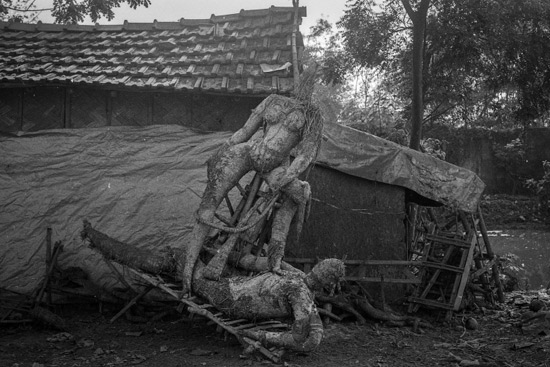
"Meanwhile, the cityscape gets filled with these humanoid figures as the devotees no longer know what to believe in them."

In the book "
Regarding Heroes" Karsh said of his 1956 session with Anita Ekberg, "The smorgasbord was already lavishly spread on the table of Anita Ekberg's California home when I arrived. Her natural behavior resembled the love goddesses she portrayed - uninhibited and seductive, and totally without guile. When changing from one gown to another, she ignored the screen her attendant had place before her. She exuded sexuality; in the garden, as she exuberantly hugged a tree trunk, it became a gesture of utmost sensuality."
© Yousuf Karsh


